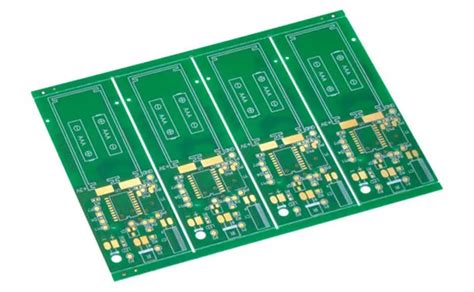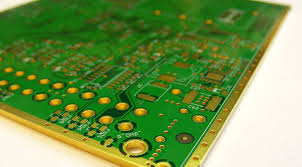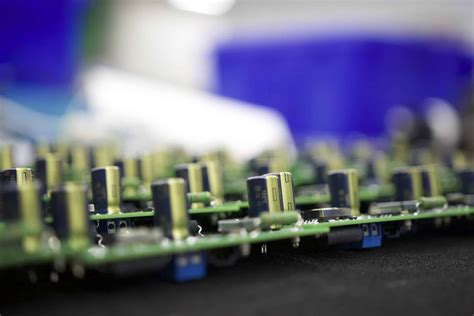Pcb milling machine
Advantages Of Using A PCB Milling Machine For Prototyping
The utilization of a PCB milling machine for prototyping offers numerous advantages that significantly enhance the efficiency and quality of the development process. One of the primary benefits is the rapid turnaround time. Traditional methods of PCB prototyping, such as chemical etching or outsourcing to a fabrication house, can be time-consuming, often taking several days or even weeks. In contrast, a PCB milling machine allows for the creation of prototypes in a matter of hours. This expedited process enables engineers and designers to quickly test and iterate on their designs, thereby accelerating the overall development cycle.
Moreover, PCB milling machines provide a high degree of precision and accuracy.
These machines are capable of producing intricate and complex circuit patterns with fine details that are essential for modern electronic devices. The precision of milling machines ensures that the prototypes closely match the final product, reducing the likelihood of errors and discrepancies. This level of accuracy is particularly important for high-frequency circuits and other applications where even minor deviations can lead to significant performance issues.
In addition to speed and precision, PCB milling machines offer a high level of flexibility.
They can accommodate a wide range of materials, including various types of copper-clad laminates, which are commonly used in PCB manufacturing. This versatility allows designers to experiment with different materials and thicknesses to optimize the performance and cost-effectiveness of their designs. Furthermore, the ability to quickly produce multiple iterations of a prototype enables designers to explore various design options and make informed decisions based on empirical data.
Another significant advantage of using a PCB milling machine is the reduction in costs associated with prototyping.
Traditional methods often involve substantial setup fees and minimum order quantities, which can be prohibitive for small-scale projects or individual designers. In contrast, a PCB milling machine eliminates these barriers by allowing for the production of single prototypes or small batches without incurring additional costs. This cost-effectiveness makes PCB milling an attractive option for startups, hobbyists, and educational institutions.
Additionally, PCB milling machines contribute to a safer and more environmentally friendly prototyping process.
Traditional chemical etching methods involve the use of hazardous chemicals, which pose health risks to operators and require careful disposal to prevent environmental contamination. PCB milling, on the other hand, is a dry process that does not involve harmful chemicals, making it a safer and more sustainable alternative. This aspect is particularly important in today’s context, where there is an increasing emphasis on environmentally responsible manufacturing practices.
Furthermore, the use of a PCB milling machine allows for greater control over the prototyping process.
Designers can make real-time adjustments to their designs and immediately see the results, enabling a more iterative and hands-on approach to development. This level of control is invaluable for troubleshooting and refining designs, as it allows for quick identification and resolution of issues.
In conclusion, the advantages of using a PCB milling machine for prototyping are manifold. The rapid turnaround time, high precision, flexibility, cost-effectiveness, safety, and environmental benefits collectively make PCB milling an indispensable tool for modern electronic design and development. By leveraging these advantages, designers and engineers can streamline their prototyping processes, reduce time-to-market, and ultimately produce higher-quality products.
Step-By-Step Guide To Setting Up Your PCB Milling Machine
Setting up a PCB milling machine requires a meticulous approach to ensure precision and efficiency in the production of printed circuit boards. The process begins with selecting an appropriate workspace. It is essential to choose a clean, well-ventilated area with adequate lighting to facilitate detailed work. Once the workspace is prepared, the next step involves unboxing and inspecting the milling machine. Carefully remove the machine from its packaging, ensuring that all components are present and undamaged. This initial inspection is crucial to identify any potential issues that could affect the machine’s performance.
Following the inspection, the machine should be placed on a stable, level surface to prevent any vibrations that could compromise the milling process.
Secure the machine firmly to the workbench using clamps or bolts, as stability is paramount for achieving precise cuts. Once the machine is securely positioned, the next step is to connect it to a power source. Ensure that the power supply matches the machine’s requirements to avoid any electrical issues. It is advisable to use a surge protector to safeguard the machine from power fluctuations.
With the machine powered, the next phase involves installing the milling software.
Most PCB milling machines come with proprietary software that needs to be installed on a computer. Follow the manufacturer’s instructions to install the software, ensuring that all drivers and updates are correctly applied. The software serves as the interface between the user and the machine, allowing for the design and execution of milling tasks. Once the software is installed, it is essential to calibrate the machine. Calibration ensures that the milling head is accurately aligned with the work surface. This process typically involves adjusting the X, Y, and Z axes to ensure precise movement. Follow the manufacturer’s guidelines for calibration, as improper alignment can lead to errors in the milling process.
After calibration, the next step is to prepare the PCB material. Select a suitable PCB blank, ensuring that it is compatible with the milling machine.
Secure the PCB blank onto the machine’s work surface using adhesive or clamps, ensuring that it is firmly in place. Properly securing the material is crucial to prevent any movement during milling, which could result in inaccurate cuts. With the PCB material in place, the next phase involves designing the PCB layout. Use the milling software to create or import the PCB design. Ensure that the design is accurate and that all components are correctly placed. The software will generate a toolpath, which guides the milling head during the cutting process.
Before commencing the milling process, it is essential to perform a dry run.
A dry run involves running the machine without the milling bit engaged to ensure that the toolpath is correct and that there are no obstructions. This step helps to identify any potential issues before actual milling begins. Once the dry run is successful, install the appropriate milling bit into the machine. Ensure that the bit is securely fastened and that it is the correct type for the material being milled.
Finally, initiate the milling process by starting the machine and allowing it to follow the toolpath. Monitor the process closely to ensure that everything is proceeding as expected. Once the milling is complete, carefully remove the PCB from the machine and inspect it for accuracy. Any necessary adjustments can be made using the milling software and machine. By following these steps, you can set up your PCB milling machine effectively, ensuring precise and efficient production of printed circuit boards.
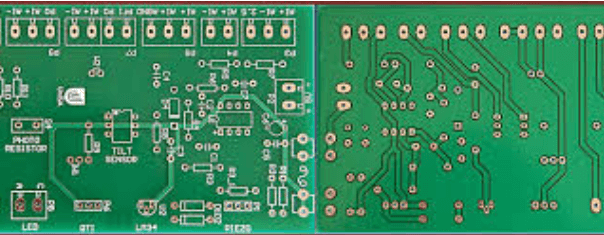
Common Issues And Troubleshooting Tips For PCB Milling Machines
Printed Circuit Board (PCB) milling machines are essential tools in the electronics industry, enabling the precise creation of circuit boards by removing material from a substrate. However, like any sophisticated equipment, PCB milling machines can encounter various issues that may hinder their performance. Understanding these common problems and knowing how to troubleshoot them can significantly enhance the efficiency and longevity of the machine.
One prevalent issue with PCB milling machines is inaccurate milling, which can result from several factors.
Misalignment of the milling bit is a frequent cause, often due to improper calibration or wear and tear. To address this, it is crucial to regularly check and recalibrate the machine, ensuring that the milling bit is correctly aligned with the substrate. Additionally, using high-quality milling bits and replacing them when they show signs of wear can prevent inaccuracies.
Another common problem is the uneven surface of the milled PCB, which can be attributed to an unstable work surface or improper clamping of the substrate.
Ensuring that the work surface is flat and stable is essential. Moreover, securely clamping the substrate can prevent movement during the milling process, thereby maintaining the uniformity of the milled surface. Regular maintenance of the clamping mechanism can also help in avoiding such issues.
Furthermore, PCB milling machines can sometimes experience software-related problems, such as errors in the design files or issues with the machine’s control software.
These problems can lead to incorrect milling paths or incomplete circuits. To mitigate this, it is advisable to thoroughly check the design files for any errors before starting the milling process. Additionally, keeping the machine’s software updated and performing regular diagnostics can help in identifying and resolving software-related issues promptly.
Dust and debris accumulation is another significant concern that can affect the performance of PCB milling machines.
The milling process generates a considerable amount of dust, which can clog the machine’s components and reduce its efficiency. Implementing a robust dust collection system and regularly cleaning the machine can prevent such build-ups. Moreover, using compressed air to blow out any residual dust from the machine’s crevices can further enhance its performance.
Electrical issues, such as power surges or fluctuations, can also impact the functioning of PCB milling machines.
These issues can cause the machine to malfunction or even damage its electronic components. To safeguard against this, it is recommended to use a surge protector and ensure a stable power supply. Additionally, regularly inspecting the machine’s electrical connections and components can help in identifying potential problems before they escalate.
Lastly, operator error is a common cause of issues with PCB milling machines.
Inadequate training or lack of familiarity with the machine’s operation can lead to mistakes that affect the milling process. Providing comprehensive training for operators and ensuring they are well-versed with the machine’s functionalities can significantly reduce the likelihood of errors. Moreover, encouraging operators to follow standard operating procedures and safety guidelines can further enhance the machine’s performance and longevity.
In conclusion, while PCB milling machines are invaluable tools in the electronics industry, they are not immune to problems. By understanding common issues such as inaccurate milling, uneven surfaces, software errors, dust accumulation, electrical problems, and operator errors, and implementing appropriate troubleshooting measures, users can ensure the optimal performance and durability of their PCB milling machines. Regular maintenance, proper training, and adherence to best practices are key to mitigating these issues and achieving precise and reliable milling results.
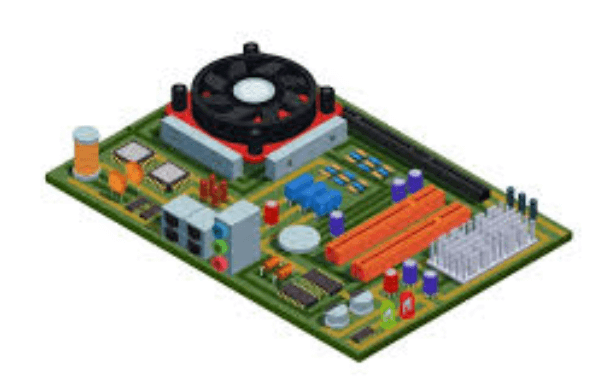
Comparing PCB Milling Machines: Which One Is Right For You?
When it comes to the intricate world of printed circuit board (PCB) manufacturing, selecting the right PCB milling machine is a critical decision that can significantly impact the quality and efficiency of your projects. PCB milling machines, also known as PCB routers, are essential tools for creating precise and reliable circuit boards. However, with a plethora of options available in the market, choosing the right one can be a daunting task. To make an informed decision, it is essential to compare various PCB milling machines based on several key factors.
First and foremost, the precision and accuracy of a PCB milling machine are paramount.
High-precision machines are capable of producing intricate designs with minimal errors, which is crucial for the functionality of the final product. Machines with advanced features such as automatic tool changers and high-resolution stepper motors tend to offer superior accuracy. For instance, machines equipped with ball screws and linear guides provide smoother and more precise movements, ensuring that even the most complex designs are executed flawlessly.
Another critical factor to consider is the software compatibility and ease of use.
Modern PCB milling machines often come with proprietary software that allows users to design and control the milling process. It is essential to choose a machine that is compatible with popular design software such as Eagle, KiCad, or Altium Designer. Additionally, user-friendly software with intuitive interfaces can significantly reduce the learning curve, enabling users to start milling PCBs with minimal training.
The material compatibility of the milling machine is also a crucial consideration.
Different PCB projects may require the use of various materials such as FR4, aluminum, or even flexible substrates. Therefore, it is important to select a machine that can handle a wide range of materials without compromising on performance. Machines with adjustable spindle speeds and robust cutting tools are better suited for handling diverse materials, providing greater versatility for different projects.
Furthermore, the size and build quality of the PCB milling machine should not be overlooked.
Depending on the scale of your operations, you may require a compact desktop machine or a larger industrial-grade model. Desktop machines are ideal for small-scale projects and prototyping, offering portability and ease of use. On the other hand, industrial-grade machines are designed for high-volume production and can handle larger boards with greater efficiency. The build quality of the machine, including the frame and components, also plays a significant role in its durability and long-term performance.
Cost is another important factor that influences the decision-making process.
PCB milling machines are available at various price points, ranging from affordable entry-level models to high-end professional machines. While it may be tempting to opt for a cheaper model, it is essential to consider the long-term benefits and potential cost savings associated with a more advanced machine. Investing in a high-quality machine can lead to better performance, reduced maintenance costs, and increased productivity over time.
In conclusion, selecting the right PCB milling machine requires careful consideration of several factors, including precision, software compatibility, material compatibility, size, build quality, and cost. By thoroughly evaluating these aspects, you can make an informed decision that aligns with your specific needs and requirements. Whether you are a hobbyist, a small business owner, or an industrial manufacturer, choosing the right PCB milling machine can significantly enhance the quality and efficiency of your PCB production process.

